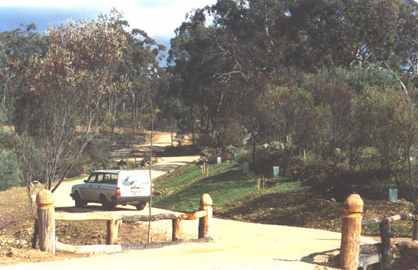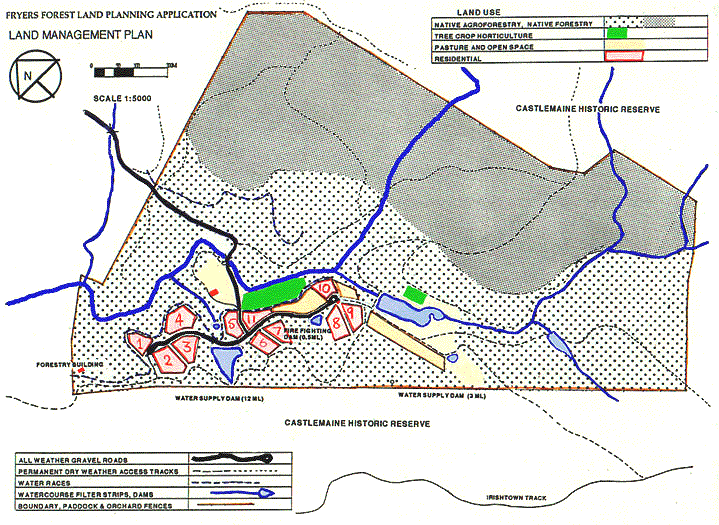평화학에 관해
이재봉 (원광대학교 정치외교학/평화학 교수, 평화연구소장)
1. 평화학의 개념과 성격, 역사와 현황
평화학 (peace science, peace studies)은 동서고금을 통해 모든 인류의 궁극적인 목표라고 할 수 있는 평화에 관해 연구하고 이를 실현하기 위한 학문이다. 전쟁을 비롯한 모든 종류의 폭력을 배제하고 평화를 추구하기 위한 학문이기 때문에 ‘가치 중립적’이 아니라 ‘가치 지향적 학문’이다. 흔히 정치학이나 국제관계학의 한 분야로 생각하기 쉽지만 정치학, 경제학, 사회학을 비롯한 사회과학뿐만 아니라 인문과학, 자연과학 등 거의 모든 전문 분야에서 다루고 연구할 수 있는 ‘학제간 학문’이다.
평화학은 제 2차 세계대전 이후 북미와 유럽에서 발전되기 시작했다. 두 차례의 세계대전을 통한 대량 학살을 막기 위한 목적이었다. 특히 제 2차 세계대전에서의 핵무기 사용과 전후 냉전 체제에서의 핵무기 개발 경쟁에 대한 대응으로 1957년 캐나다에서 러셀 (Russell)과 아인슈타인 (Einstein)을 중심으로 국제학술회의가 열린 뒤부터 북미와 유럽에 평화연구 기관들이 연이어 세워지고 평화연구 학술지가 발간되기 시작했다.
1959년 미국에서는 불딩 (Boulding)과 래포포드 (Rapoport)의 주도로 미시건 대학에 갈등해결연구센터가 창설되고 Journal of Conflict Resolution이 발간되기 시작했다. 1959년엔 노르웨이에 갈퉁 (Galtung)의 주도로 오슬로평화연구소가 창립되고 곧 Journal of Peach Research가 발간되었다. 1961년엔 캐나다에 캐나다평화연구소가 세워졌고, 1963년엔 미국에 평화연구국제협회가 발족되었다. 나아가 1963년 스위스에서 퀘이커교의 후원으로 국제평화연구회의가 개최되었고, 이를 바탕으로 1964년 국제평화연구회 (International Peace Research Association, IPRA)가 창립되었다.
아시아에서는 일본과 인도에서 가장 먼저 평화학이 발전되기 시작했다. 일본은 세계 최초로 그리고 아직까지 유일하게 핵무기 피해를 당한 경험 때문에 구미의 평화학과 평화운동을 일찍 받아들였다. 인도에서는 간디의 ‘비폭력 저항’ 운동과 전통을 바탕으로 평화운동이 발전해왔다. 참고로, 간디는 저항을 하지 않은 ‘무저항’주의자가 아니라 적극적으로 저항한 ‘비폭력’ 저항주의자였다.
한국에서는 1980년대부터 평화학을 본격적으로 받아들이기 시작했다. 1984년 경희대학교에 평화복지대학원이 설립되었고 부설 연구소로 국제평화연구소가 들어섰으며, 1989년엔 고려대학교에 평화연구소가 세워졌다. 1990년대부터 다수의 대학에 평화학 강좌가 개설되기 시작했다. 나아가 2003년엔 평화학 전문 교육기관으로 천안에 국제평화대학원대학교가 문을 열었는데, 2008년 국제뇌교육종합대학원대학교로 이름이 바뀌었다.
2. 평화와 폭력의 개념과 종류
우리가 일상적으로 일컫는 평화, 또는 정치학이나 국제관계학을 비롯한 전통적 사회과학에서 말하는 평화는 대개 전쟁이 없는 상태로 정의된다. 그러나 질병이 없다고 건강하다고 말하기 어렵듯이, 전쟁이 없다고 해서 평화롭다고 말하기 곤란하다. 전쟁은 폭력의 한 형태일 뿐이다.
따라서 1960년대 초부터 서구에서 발전되기 시작한 평화학 또는 평화연구에서는 평화를 전쟁뿐만 아니라 모든 종류의 폭력이 없는 상태로 정의한다. 전쟁을 비롯해 사람의 목숨을 빼앗거나 신체에 피해를 가하는 직접적/물리적/신체적 폭력뿐만 아니라, 사회적 불평등이나 차별 같은 간접적/구조적/제도적 폭력까지 없어야 진정한 평화가 이룩될 수 있다는 인식이 깔려있는 것이다.
이에 따라 평화학자 또는 평화연구자들은 평화를 크게 두 가지로 나누어, 물리적 폭력이 없는 상태를 ‘소극적 평화 (negative peace)’라 부르고, 구조적 폭력까지 없는 상태를 ‘적극적 평화 (positive peace)’라 일컫는다. 이를 다른 말로 바꾼다면, 전자는 ‘국가 안보 (national security) 개념의 평화’ 또는 ‘좁은 의미의 평화’로, 후자는 ‘인간 안보 (human security) 개념의 평화’ 또는 ‘넓은 의미의 평화’로 부를 수 있을 것이다.
이렇듯 평화를 모든 종류의 폭력이 없는 상태로 정의한다면, 폭력의 개념을 구체적으로 정리해볼 필요가 있다. 폭력은 일반적으로 사람이나 재물에 물리적 피해를 가하는 인간의 공격적 행위를 일컫는다. 그러나 폭력에 관하여 연구하는 사회과학자들 중에는 사회적 통념에 따라 폭력의 개념을 “제도화된 행위 유형으로부터의 일탈”로 한정하는 경향이 있다. 폭력의 개념을 비합법적이거나 공인되지 않는 무력의 사용으로만 규정하는 것이다. 그들은 국법을 어기거나 국가를 대표하는 기관에 대한 물리적 폭력 행위에 연구의 초점을 맞추면서, 그러한 물리적 폭력을 초래한 법률과 정부에 의한 구조적 폭력은 연구 대상으로 삼지 않는다.
그러나 실질적으로 폭력은 지배 세력이 그들의 권력이나 기득권을 유지하기 위하여 흔하게 그리고 효과적으로 행사하고 있으며, 피지배층은 그들이 처한 상황을 개선하기 위하여 덜 흔하게 그리고 덜 효과적으로 사용하고 있다. 지배 세력의 통치 또는 ‘위로부터의 폭력 (violence from above)’이 피지배층의 저항 또는 ‘아래로부터의 폭력 (violence from below)’을 부르는 것이다. 여기에서 지배 세력의 구조적 폭력은 크고 체계적이지만 지속적이기 때문에 잘 드러나지 않으며 드러나더라도 정당하다고 묵인되기 쉽다. 그러나 피지배층의 물리적 폭력은 작고 국지적이지만 일시적이기 때문에 쉽게 눈에 띄고 불법 행위로 간주되는 특징이 있다.
사회과학이 일반적으로 폭력의 개념을 피지배층의 불법 행위에 초점을 맞추면서 법률과 제도들에 의해 가해지는 피해를 무시하는 경향에 처음으로 반발을 보인 집단이 갈퉁을 비롯한 서구의 평화연구자들이었다. 갈퉁은 폭력을 “인간의 기본적인 욕구에 대한 피할 수 있는 모독”이라고 정의함으로써, 목숨을 잃더라도 그것이 피할 수 없는 경우라면 폭력이 행사되지 않았음을 강조한다. 예를 들어, 어떤 사람이 병을 얻거나 사고를 당한 후 병원비가 없다는 등의 이유로 의사의 적절한 치료를 받지 못해 죽었다면, 이 죽음은 피할 수 있었기 때문에 구조적 폭력이 있었다고 볼 수 있다. 그러나 의사의 적절한 치료에도 불구하고 현재의 의료 자원과 기술로는 고칠 수 없는 질병이나 치명적인 사고 때문에 죽었다면, 이 경우는 피할 수 없는 죽음이었기 때문에 폭력이 있었다고 할 수 없다는 것이다.
그는 인간의 기본적인 욕구를 생존에 대한 욕구 (survival needs), 복지에 대한 욕구 (well-being needs), 정체성에 대한 욕구 (identity needs), 그리고 자유에 대한 욕구 (freedom needs)의 네 가지로 분류하고 있다. 이것은 데이비스 (Davies)가 정치적 폭력을 분석하며 임상심리학자 매슬로우 (Maslow)의 연구를 인용하여 인간의 기본적인 욕구를 신체적 욕구 (physical needs), 사회적‧애정적 욕구 (social-affectional needs), 자존 또는 품위에 대한 욕구 (self-esteem or dignity needs), 그리고 자아실현에 대한 욕구 (self-actualization needs) 등 네 가지로 분류한 것과 비슷하다.
첫째, 생존에 대한 욕구를 모독하는 행위는 목숨을 앗아가는 것과 같은 폭력이다. 무엇 보다 먼저 전쟁이나 사형제도 등을 들 수 있다. 둘째, 복지에 대한 욕구를 모독하는 행위는 생명을 불구로 만드는 것과 같은 폭력으로 경제제재나 봉쇄가 이에 포함된다. 예를 들어, 경제 제재는 직접적이고 즉각적으로 목숨을 빼앗지는 않지만, 식품이나 의약품이 적절하게 공급되지 못하게 함으로써 천천히 그러나 의도적으로 생명을 박탈하는 행위와 마찬가지다. 셋째, 정체성에 대한 욕구를 모독하는 행위는 소외시키는 것과 같은 폭력이다. 이러한 예로는 여성이나 소수 민족 등 어느 특정 부류의 사람들을 차별하는 행위를 들 수 있다. 넷째, 자유에 대한 욕구를 모독하는 행위는 억압하는 것과 같은 폭력으로 감금이나 추방 등이 이에 포함된다.
그리고 갈퉁은 구조적 폭력을 “[인간이 지금과 다른 상태로] 될 수 있었던 잠재력과 현재 처해있는 상태와의 차이를 제공하는 요인 (the cause of the difference between the potential and the actual, between what could have been and what is)”으로 정의한다. 이에 덧붙여 잠재력과 현 상태의 간격을 넓히는 요인이나 그 간격을 좁히는 데 방해가 되는 요인도 물론 구조적 폭력으로 간주한다. 여기에는 자원의 불평등한 분배를 비롯한 착취 (exploitation), 피지배층의 자율성이나 자치권 확보를 저지하는 침투 (penetration), 피지배층을 서로 격리시키는 분열 (fragmentation), 그리고 피지배층에 대한 탈사회화 같은 소외화 (marginalization) 등 크게 네 가지 범주가 포함된다.
예를 들어, 사회적 자원의 불공평한 분배로 어떤 사람들의 기본적 욕구에 대한 박탈이 방치된다면 폭력은 이미 사회 구조에 내재된 것이다. 이 경우 지배 세력이나 자본가들을 비롯해 폭력의 구조화를 통해 이득을 취할 수 있는 집단들은 그들의 기득권을 지키기 위해 현상을 유지하려고 힘쓰게 되며, 피지배층이 자신들의 해방을 추구한다면 이를 막기 위한 지배 세력의 구조적 폭력은 지속되고 강화될 것이다.
여기에서 정치적 폭력에 관한 연구를 하는 정치심리학자들에 의한 좁은 의미의 폭력과 적극적 평화를 추구하는 평화학자들에 의한 넓은 의미의 폭력 사이에 근본적인 개념의 차이가 발견된다. 데이비스는 사람들이 기대하는 것과 실제로 얻는 것 사이에 ‘참을 수 없는 격차 (intolerable gap)’가 생기거나 피지배층의 가장 기본적인 욕구가 지배 세력에 의해 충족되지 않으면 데모나 혁명 같은 정치적 폭력이 발생하기 쉽다고 했다. 파이어러벤드 (Feierabend) 부부는 사회적 기대치와 사회적 만족도 혹은 성취도 사이의 격차를 나타내는 ‘체계적 좌절 (systemic frustration)’이 공격적이고 폭력적인 정치 행위를 유발한다고 했다. 그리고 거어 (Gurr)는 사람들이 당연히 받아야 할 것과 실제로 얻을 수 있는 것 사이의 격차를 뜻하는 ‘상대적 박탈 (relative deprivation)’이 시민의 폭력을 초래하는 주된 요인이라고 보았다. 또한 갈퉁 자신도 구조적 폭력이라는 개념을 쓰기 전에는 사람들이 원하는 것과 실제로 성취하는 것의 격차 등을 나타내는 ‘계층 불균형 (rank disequilibrium)’이 범죄나 혁명 등의 공격적 행위를 유발하게 된다고 했다. 즉, 정치심리학자들은 사람들이 기대하는 것과 실제로 성취하는 것 사이의 격차 또는 기본적인 욕구가 좌절되는 것이 정치적 폭력의 요인이라고 분석한 반면, 평화학자들은 그러한 격차를 발생시키거나 욕구를 좌절시키는 요인이랄 수 있는 사회적 불공평 자체가 구조적 폭력이라고 정의하는 것이다.
갈퉁은 구조적 폭력이란 개념을 처음으로 사용한 뒤 약 20년만에 문화적 폭력이란 개념을 소개했다. 그는 문화적 폭력을 “직접적 폭력이나 구조적 폭력을 정당화하거나 합법화하는 데 사용될 수 있는 문화의 측면”이라고 정의하면서 이에 종교와 사상, 언어와 예술, 그리고 과학과 학문 등의 폭력성을 포함시키고 있다. 종교나 예술 혹은 학문 등을 통해 직접적 폭력 행위나 구조적 폭력의 실체가 정당하다거나 최소한 잘못된 것은 아니라고 간주하게 함으로써 폭력의 사용이 합법화되거나 일반적으로 용인되는 것이 문화적 폭력이라는 것이다. 그리고 문화적 폭력의 한 가지 중요한 유형은 구조적 폭력의 희생자들이 현 상태를 타파하기 위해 항거하는 경우 지배 세력은 사회의 안정을 꾀한다는 구실로 그들을 범법자 혹은 불순 세력으로 낙인찍어 그들을 비난하며 그들에 대한 폭력을 정당화하는 것이다.
이상과 같은 세 가지 유형의 폭력은 서로 별개의 것이 아니라 밀접하게 연관되어 있어서 명확하게 경계선을 긋기가 쉽지 않다. 폭력은 폭력을 낳는다는 말처럼 어느 한 종류의 폭력은 다른 종류의 폭력을 초래하기 때문이다. 예를 들어, 물리적 폭력이 반복되고 확산되면 폭력적 사회구조가 제도화한다. 이에 따라 폭력적 문화가 내면화하면 구조적 폭력이 생활과 습관처럼 굳어져버리는 문화적 폭력이 된다. 따라서 직접적/물리적/신체적 폭력은 사건 (event)과 같고, 간접적/구조적/제도적 폭력은 절차 (process)와 같으며, 문화적 폭력은 상수 (invariant) 또는 영속적인 것 (permanence)과 같다고 할 수 있다.
이 가운데 직접적/물리적/신체적 폭력은 구체적 행위자에 의해서 물리적으로 자행되기 때문에 동적이고 잘 드러나며, 그것이 불법적이거나 비도덕적이라는 인식을 준다. 이에 반해 간접적/구조적/제도적 폭력은 법이나 제도 등에 의해 구조적으로 자행되기 때문에 전자보다 훨씬 심각한 폭력성을 내포해도 정적이고 쉽게 눈에 띄지 않으며, 사회구조에 내재하기 때문에 당연한 것으로 간주된다. 나아가 문화적 폭력은 폭력이 생활이나 습관이 되어버린 상태이기 때문에, 폭력이 폭력인지조차 인식하지 못하게 되고 폭력의 피해자가 가해자가 되기도 한다. 우리가 대체로 물리적 폭력에 대해서는 크게 비난하면서도, 구조적 폭력에는 별로 관심을 갖지 못하고, 문화적 폭력은 인식조차 하지 못하는 배경이다. 게다가 직접적/물리적/신체적 폭력은 육체를 불구로 만들지만, 간접적/구조적/제도적 폭력이나 문화적 폭력은 정신이나 의식을 마비로 이끌기 쉽다.
3. 한국 사회의 독특하고 심각한 구조적 폭력
(1) 사상에 대한 폭력: 국가보안법의 남용과 오용 및 극심한 반공주의에 따른 인간성 파괴
사상이란 사람의 마음 속에 들어 있는 인생관이나 세계관 또는 정치적 신조나 사회적 견해를 뜻한다. 사상이 안에 머무르지 않고 밖으로 나타나면 언론, 출판, 집회, 결사의 자유와 결합되며, 진리 탐구와 연결되면 학문의 자유로, 신앙으로 이어지면 종교의 자유로 발전된다. 따라서 “사상의 자유는 모든 정신적, 정치적 자유의 원리적 기초이며 기본권 중의 기본권”인 것이다.
그러나 우리는 개인의 자유를 핵심으로 삼는 자유민주주의를 지향하는 사회에 살면서도 무려 60년이 지나도록 사상의 자유를 포함한 기본적 인권을 박탈당하고 있다. 사상 때문에 분단과 전쟁을 겪으며, 사회주의를 지향하는 북한과 대치하고 있다는 구실에서다. 남한에서는 헌법 제 1조에서부터 자유민주주의를 내세우지만 가장 기본적인 자유조차 크게 제한하고 있으며, 북한에서는 나라 이름에서부터 인민민주주의를 앞세우지만 인민의 기본적인 생활조차 제대로 지켜 주지 못하는 어처구니없는 현실을 보게 된다.
개인의 자유를 가장 중시한다는 정치 체제 아래서 인간의 가장 기본적인 권리인 사상의 자유가 제한당하는 폭력적 사회 구조가 만들어지는 모순은 일차적으로 국가 보안법의 남용과 오용 그리고 그에 따라 사회에 널리 퍼져 있는 극심한 반공주의와 ‘적색 공포증’ 때문이다.
따라서 국가 보안법은 사상의 자유와 그와 연결된 언론, 출판, 집회, 결사를 포함한 표현의 자유를 근본적으로 박탈하며, 학문과 문화의 발전을 해치고 종교활동 및 평화운동까지 위축시키며 온 사회를 ‘창살없는 감옥’으로 이끄는 구조적 폭력이다. 반공은 궁극적으로 자유민주주의를 지키기 위한 것이지만, 국가보안법은 “자유민주주의를 외치며 가장 비자유주의적이고 비민주주의적 방법으로” 인간성을 파괴하고 사회의 발전을 방해하며, 통일의 한쪽 주체인 북한을 반국가단체로 규정함으로써 민족 통일을 가로 막고 분단 체제의 모순을 심화하는 구조적 폭력인 것이다. 나아가 이러한 구조적 폭력이 남북한이 대치하고 있는 분단 상태에서는 당연한 것처럼 여기도록 이끌고, 반공을 위해서라면 다른 가치는 다소 희생되어도 좋다는 사회 분위기를 만들어 가는 것은 문화적 폭력이라고 할 수 있다.
(2) 여성에 대한 폭력: 유교사상과 가부장제의 전통이 빚어내는 여성 차별
여성은 인구의 절반이다. 절반의 인구가 다양한 방법으로 폭력을 당하거나 스스로에게 폭력을 가하고 있다. 개인의 능력이나 자질에 관계없이 오로지 여성이라는 이유로 폭력을 당하거나 가하고 있는 것이다. 여성에 대한 폭력은 동서고금을 통해 나타난 현상이지만, 한국 사회에서는 유교적 가부장제의 전통과 영향에 따라 여성에 대한 폭력이 문화가 되어버렸고, 그러한 폭력적 문화 (violent culture)는 다시 문화적 폭력 (cultural violence)으로 이어졌다.
첫째, 여성에 대한 직접적/물리적/신체적 폭력은 남성의 완력과 만용이 여성에게 물리적으로 휘두르는 폭력이다. 이러한 폭력의 사례는 가정에서 매맞는 아내를 통해 찾아볼 수 있고, 사회에서는 성폭력 등으로 드러난다.
둘째, 여성에 대한 간접적/구조적/제도적 폭력은 각종 법률과 제도를 포함한 사회구조를 통해 여성들이 당하는 차별과 그에 따른 사회적 불평등을 일컫는다. 예를 들어, 여성들의 사회 진출 욕구가 늘어도 취업하기가 어렵고, 일자리를 잡아도 직종이나 작업 조건, 직업 안정성 및 승진 기회, 그리고 임금 등에서 극심한 차별을 받기 쉽다.
셋째, 여성에 대한 문화적 폭력은 여성에 대한 직접적 폭력이나 구조적 폭력을 정당화하거나 재생산하는 문화를 일컫는다. 학문과 예술, 그리고 종교와 전통 등을 통해 여성에 대한 차별과 남녀불평등이 당연하게 여겨지거나 조장되어 그러한 폭력이 생활과 습관으로 되어버리는 현상이다.
따라서 여성에 대한 물리적 폭력은 주로 남성에 의해, 구조적 폭력은 주로 사회제도와 법률에 의해, 문화적 폭력은 여성 스스로에 의해서도 가해지고 있는 것이다.
4. 평화학과 평화운동의 목표와 방법: 폭력 없는 세상으로 가는 길
평화학 또는 평화운동에서는 목표로서의 평화뿐만 아니라 수단으로서의 평화도 중시한다. 누구든지 목표로서의 평화는 중시하면서도 수단 또는 과정으로서의 평화에는 소홀하기 쉬운데, 평화는 어떠한 경우에라도 평화적 수단으로 성취해야 한다는 것이다. 예를 들어, 목적이 수단을 정당화할 수 없듯이, 평화를 위해 전쟁을 일으키는 모순을 용인할 수 없다는 뜻이다.
평화를 평화적으로 또는 비폭력적으로 성취하기 위한 운동은 세계 곳곳에서 일어나고 있다. 폭력 없는 세상을 이루기 위한 획기적 사례를 들자면 사형제 폐지, 병역 의무에 대한 양심적 거부 인정, 군대 폐지, 비폭력 민방위대 설립, 전쟁세 폐지, 대량 살상 무기 폐기, 지뢰 제거 등을 들 수 있다. 이 가운데 처음 세 가지만 아래에 소개한다.
첫째, 2009년까지 세계 약 200개국 가운데 이탈리아 (1947), 독일 (1949), 영국 (1973), 프랑스 (1981) 등 94개국이 모든 범죄에 대하여 사형제를 완전히 폐지하였다. 사형제를 폐지한 나라가 1987년까지는 28개, 그리고 1990년까지는 39개에 머물렀는데 2000년대 들어 두 배 이상으로 크게 늘어난 것이다. 이에 덧붙여 10개 나라는 일반 범죄에 대해서는 사형제를 폐지하고 계엄이나 전쟁 등 특별한 상황에서만 부분적으로 사형제를 유지하고 있다. 또한 35개국에서는 사형제를 법적으로는 폐지하지 않고 있지만, 10년 이상 단 한 번도 사형을 집행하지 않은 실질적 폐지국이다. 이에 반하여 미국 (미시건, 뉴욕 등 15개 주에서는 폐지), 중국, 일본 등 68개국에서 사형제를 법적으로 유지하며 지속적으로 살인을 저지르고 있다.
둘째, 강력한 군대를 유지하고 있으면서도 국가가 징병에 대한 인민의 양심적 거부를 인정하는 나라가 적지 않다. 1998년 현재 미국, 러시아, 프랑스, 독일, 이스라엘 등 47개국이 병역 의무에 대한 양심적 거부를 인정하고 있다. 이러한 나라가 1972년에는 28개국, 1988년에는 31개국이었지만 꾸준히 늘고 있는 것이다. 참고로 독일이 분단되어 있을 때 서독이 동독과 대치하고 있으면서도 1949년의 기본법 제 4조에서 “어느 누구도 자신의 양심에 반하여 무기를 지니고 전쟁 업무에 강요받지 않을 것이다”고 밝힌 것은 주목할 만하다.
셋째, 2001년 현재 27개국은 군대를 가지고 있지 않다. 이 가운데 코스타리카, 도미니카, 그레나다, 아이티, 파나마 등 19개 나라는 군대도 없고 다른 나라와 방위 조약조차 맺지 않고 있으며, 아이슬랜드, 모나코 등 8개 나라는 군대를 갖고 있지 않는 반면 미국이나 프랑스 등과 방위 조약을 맺고 있다. 그리고 적어도 18개 이상의 속령 (屬領)은 그에 대한 통치권을 주장하는 나라와의 협약이나 국제 조약에 의해 어떠한 병력도 두지 않고 있다. 군대가 국가의 방위나 정체성 또는 사회 통제를 위해 없어서는 안될 것으로 간주하는 나라들에서는 군대의 폐지가 매우 놀랄만한 일일 것이다. 그러나 비록 군대를 가지고 있지 않은 나라들이 모두 약소국들이고 어떤 나라들은 방위를 동맹국에 의존하고 있을지라도, 그들은 분명히 군대가 없는 나라를 만들 수 있다는 가능성을 보여주고 있다.
국가인권위원회, [2010 인권대학], 1-14쪽.

 SUSTAINABLE FORESTRY
SUSTAINABLE FORESTRY

